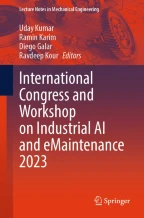
The fourth industrial revolution, colloquially referred to as “industry 4.0”, has garnered substantial global attention in recent years. There, Artificial intelligence (AI) driven industrial intelligence has been increasingly deployed in predictive maintenance (PdM), emerging as a vital enabler of smart manufacturing and industry 4.0. Since in recent years the number of articles focusing on Artificial Intelligence (AI) in PdM is high a review on the available literature reviews in this domain would be useful for the future researchers who would like to advance the research in this area and also for the persons who would like to apply PdM in their application domains. Therefore, this study identifies the AI revolution in PdM and focuses on the next stages available in the literature reviews in this area by quality assessment of secondary study. A well-known structured review approach (Systematic Literature Review, or SLR) was employed to perform this tertiary study. In addition, the Scale for the Assessment of Narrative Review Articles (SANRA) approach for evaluating the quality of review papers has been employed to support a few of the research questions. Here, This tertiary study scrutinizes four crucial aspects of secondary articles: (1) their specific research domains, (2) the annual trends in the quantity, variety, and quality (3) a footsteps of top researchers, and (4) the research constraints that review articles face during the time frame of 2015 to 2022. The results show that the majority of the application areas are applied to the manufacturing industry. It also leads to the identification of the revolution of AI in PdM as well. Our final findings indicate that Dr. Cheng et al.’s (2022) review has emerged as the predominant source of information in this field. As newcomers or industrial practitioners, we can benefit greatly from following his insights. The final outcome is that there is a lack of progress in SLR formulation and in adding explainable or interpretive AI methodologies in secondary studies.
This is a preview of subscription content, log in via an institution to check access.